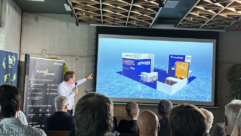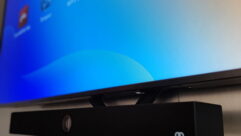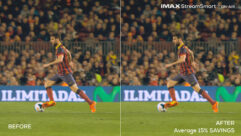A Successful Meeting
Mar 1, 2001 12:00 PM,
Bill Whitlock
By far, the easiest and most effective way to prevent power linenoise coupling is to use ground isolators in signal lines. CleanSignals
AUDIO AND VIDEO SYSTEMS THAT ARE used for presentations in hotelballrooms and large meeting rooms can present unique noisechallenges. The equipment is usually portable, often rented, andmay have unknown interface or grounding-related quirks.Furthermore, this gear must often be linked to an in-house systemwhose connections to power and building ground networks areunknown. Murphy’s Law tends to combine these variables so thatsystem noise problems are maximized. So, what can you do to ensurea successful event despite all the unknowns?
A HOSTILE ENVIRONMENT
From an electromagnetic hostility point of view, hotel ballroomsand meeting rooms in commercial buildings are a far cry fromresidential or recording studio settings. These venues usually havelots of potential interference sources like fluorescent lights,high-powered light dimmers and, very often, commercial kitchenappliances, air conditioning, vending machines, vacuum cleaners andelevators. Light dimmer interference will always be worst when thedimmer is set for about half brightness. The high-frequencyinterference generated by these devices travels throughout thebuilding via power-line wiring. Stopping this interference at itssource is the ideal cure but is usually not an option.
Dimmer noise is coupled from the power line to the internalground of each piece of equipment, regardless of whether its powerplug is 2- or 3-pronged. When this noise current flows in theshield of an unbalanced cable connecting two pieces of equipment,the noise is directly added to the signal. In general, unbalancedconnections (RCA or 2-conductor phone connectors for audio and anycomposite video, S-video, RGB or VGA/SVGA connector for video) arefar more vulnerable to interference than balanced ones (XLR or3-conductor phone for audio). In a sound system, the result is mostoften heard as hum, buzz, clicks or pops. When interference affectsvideo systems, there can be a variety of symptoms, but the mostcommon is a light or dark horizontal bar that moves slowly from thebottom to the top of the screen in standard broadcast video orVCR/DVD playback. Because of different scan rates, computerdisplays will exhibit varying symptoms.
Noise elimination treatments aim to prevent coupling into theaudio or video signal path. Power-line noise is invariably a biggerproblem when pieces of equipment are plugged into different branchcircuits. So power everything from one AC outlet whenever possible.Use the shortest possible cables, and never coil the excess length.Long or coiled cables not only increase power-line noise coupling,but they also increase the possibility of RF interference. Whenchoosing cables, select those with heavy braided copper shielding.Cables with foil and drain wire shields are generally inferior withregard to power-line noise coupling. Hum or other interference thatchanges when a connector is wiggled indicates a poor contact. Use agood commercial contact cleaner and exercise the contacts via a fewmating cycles.
For unbalanced signal cables, by far the easiest and mosteffective way to prevent power-line noise coupling is to use groundisolators in signal lines. Ground isolators completely break theelectrical ground connections responsible for the noise coupling inunbalanced cables. Passive ground isolators for audio, video andCATV are commercially available, but beware that poor quality unitscan degrade signal quality. Optical isolators are recommended asthe bulletproof cure for noise coupling into RS-232 or RS-422 datalines. Jensen makes an isolator kit that includes audio, video andCATV units, plus adapters and instructions to help locate and cureproblems easily. (See www.jensentransformers.com/iso_aud.html.)
RF interference can result in local AM radio stations or ham/CBradio operators being heard in the system. Any external cable,whether signal or power, can act as an antenna bringinginterference into the equipment. And outdoor RFI can hitch a rideinto a building on power, telephone or CATV lines because they,too, act as huge outdoor antennas. Unfortunately, most equipment issusceptible to RFI and will produce symptoms if the interference isstrong enough.
Since ground isolators have finite bandwidth, they offerinherent RFI suppression and will eliminate lower frequency RFI inmost situations. Keeping cables on the floor will generally reduceantenna effects and RFI. Also, clamp-on ferrite clamshells can bevery effective for interference whose frequency is over about 20MHz. In most cases, they work best when placed on the cable at thereceive end and, in particularly stubborn cases, the cable can belooped through the shell several times.
Sometimes, power-line noise is magnetically induced in signalcables because they’re bundled with power cords. When this happens,the cure may be simply bundling signal cables and power cablesseparately and spacing the bundles as far apart as possible. As arule, positioning cables to cross at right angles will minimize anymagnetic coupling.
CONNECTING TO HOUSE SYSTEMS
Sometimes a portable system or other A/V equipment must beconnected to the house P.A. system. Often, the house connectionsare via XLR mic jacks. For portable equipment with an unbalancedaudio output, such as a computer with sound card, getting anoise-free connection to the house system can pose a real problem.Figure 1 shows a converter/isolator, known as a direct box inrecording studios, which converts line-level signals tolow-impedance mic level and also prevents ground loop noiseproblems. Its high input impedance (about 100 k-ohm) makes itsuitable for a wide variety of signal sources (electric guitars,electronic keyboards and synthesizers, vacuum-tube or conventionalstereo gear, etc.). If a balanced line-level input is provided,connect unbalanced outputs to it the smart way: Using balanced(shielded, 2-conductor) cable, connect low and shield together onlyat the unbalanced connector end of the cable.
Bill Whitlock is president of Jensen Transformers, 7135Hayvenhurst Avenue, Van Nuys, CA 91406. He may be reached viae-mail at [email protected] or by phone at818/374-5857.










